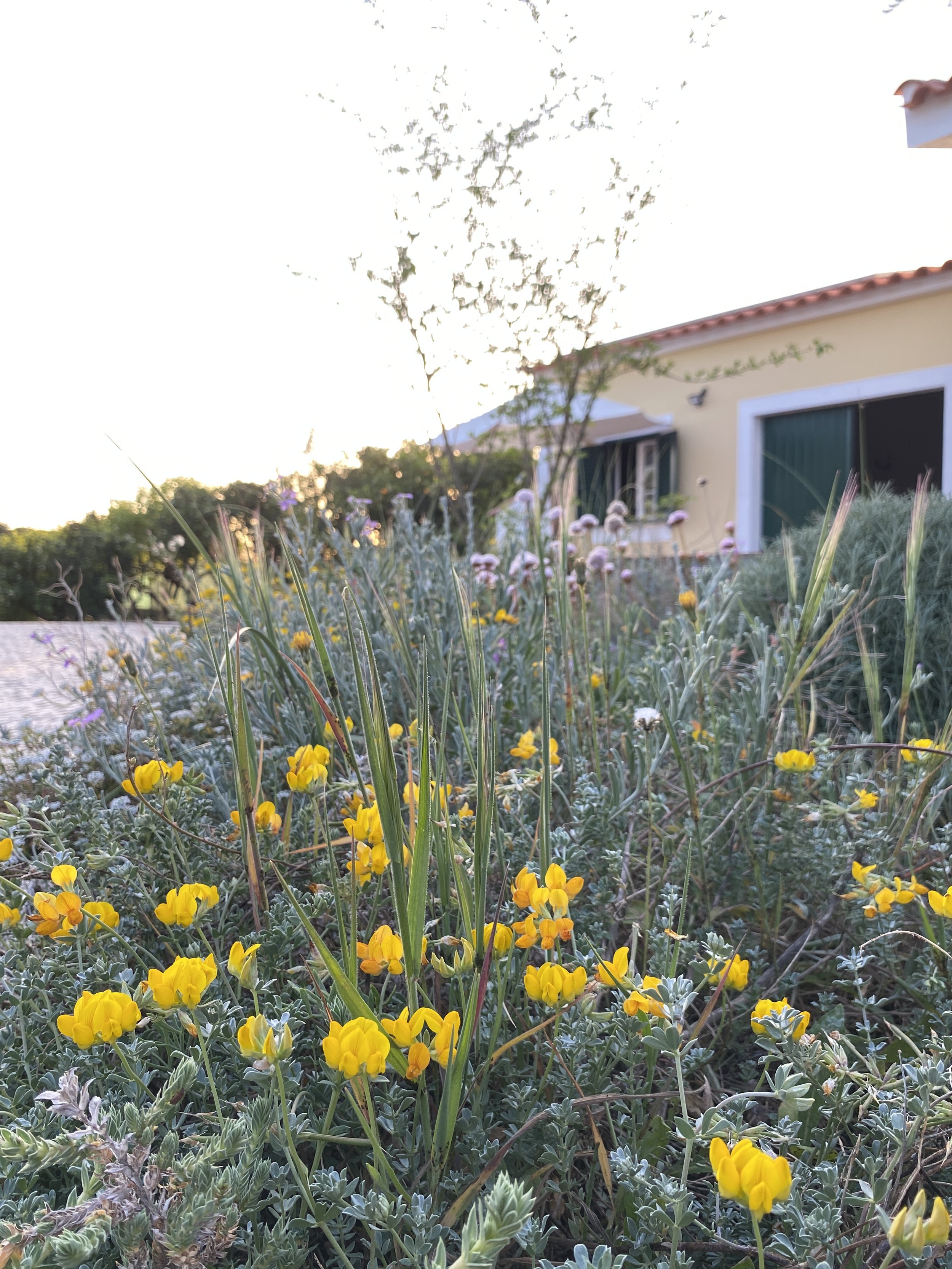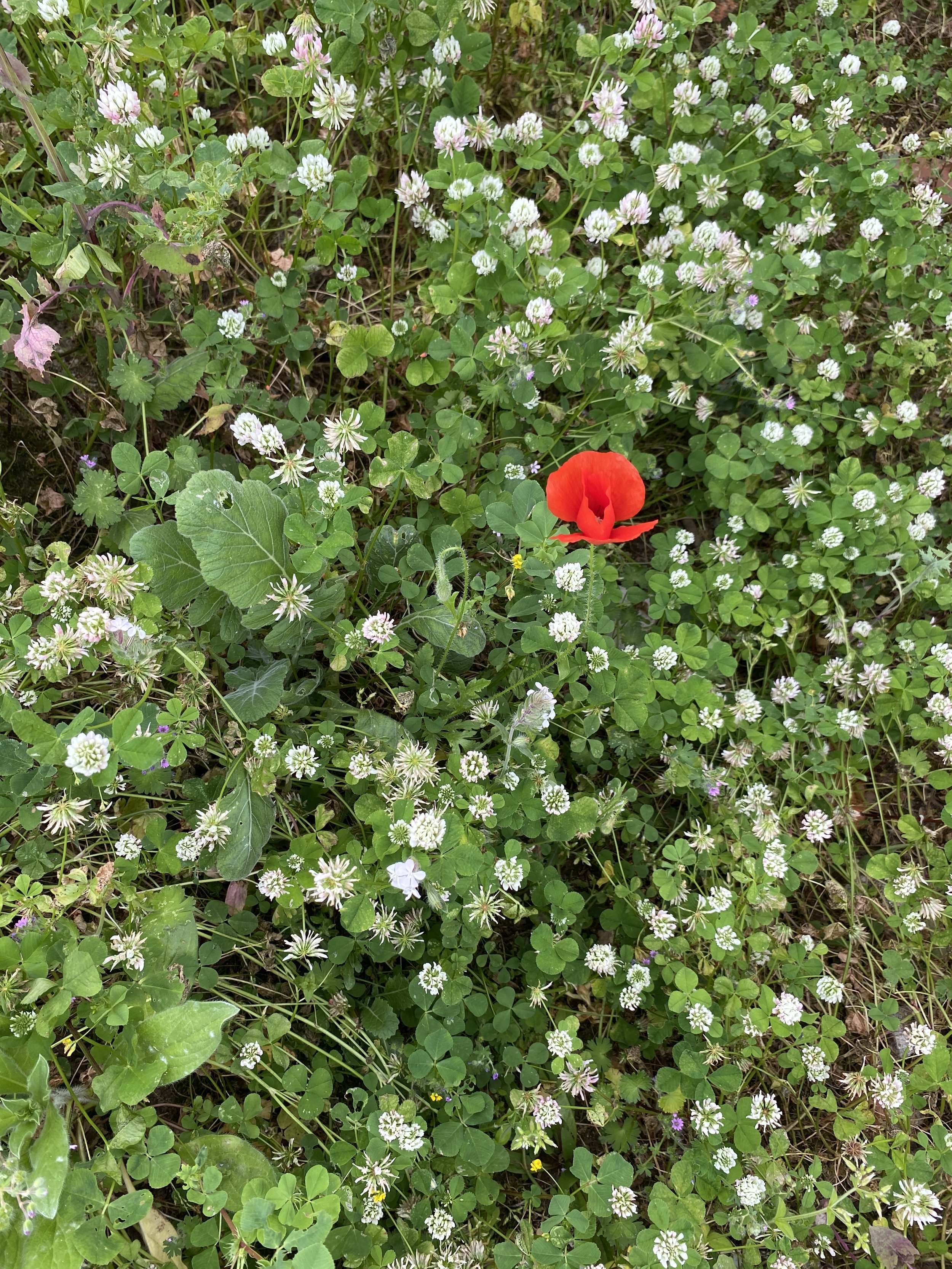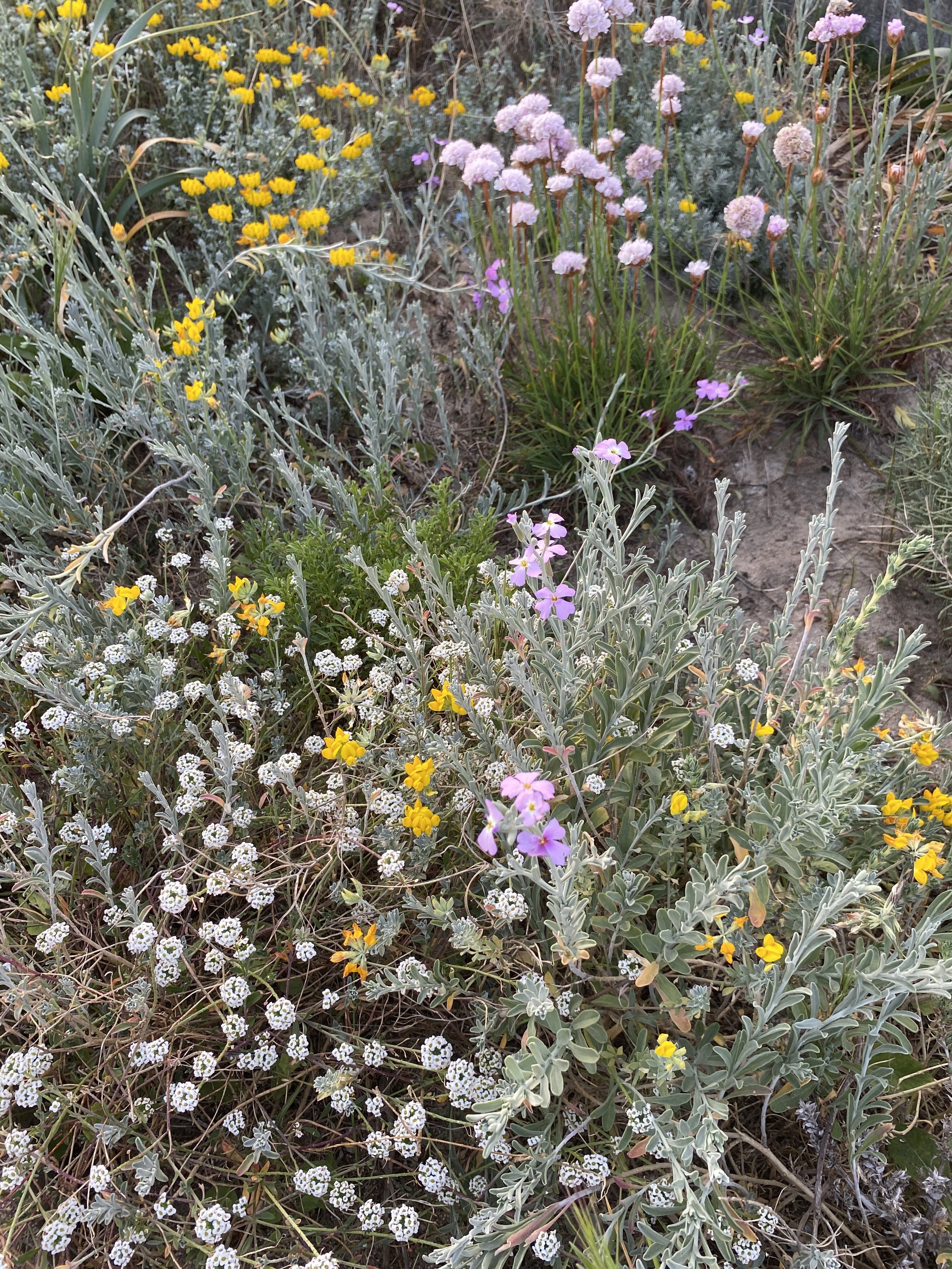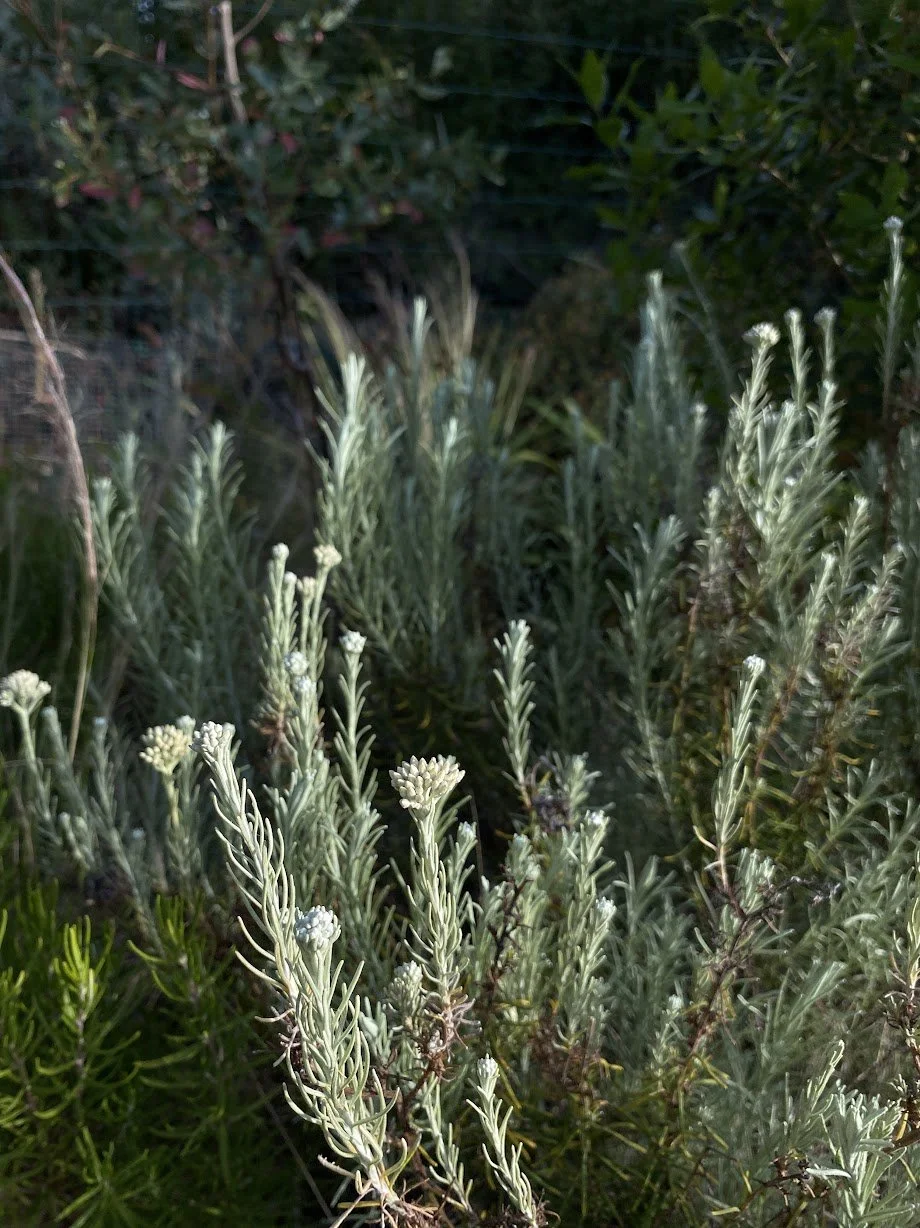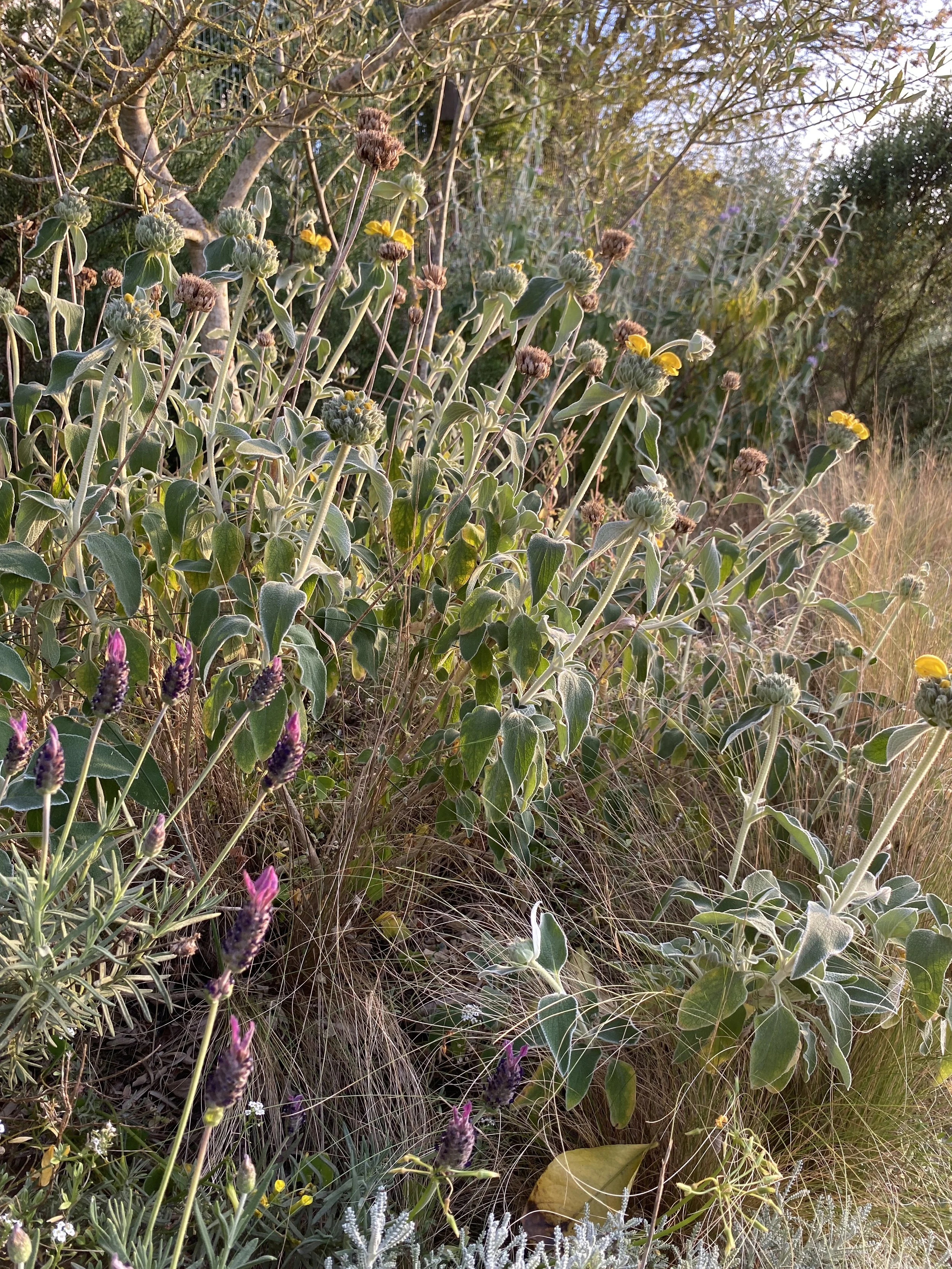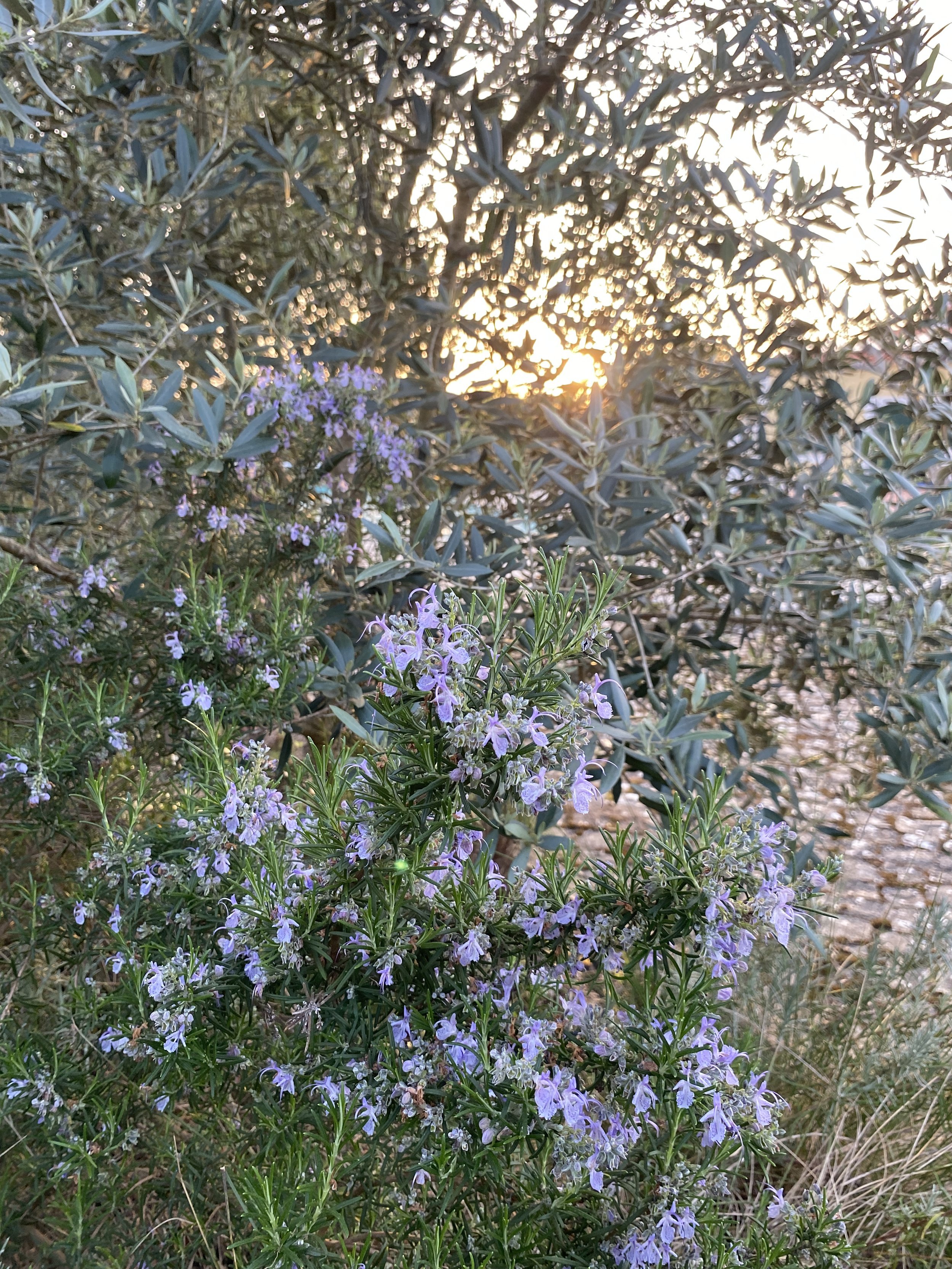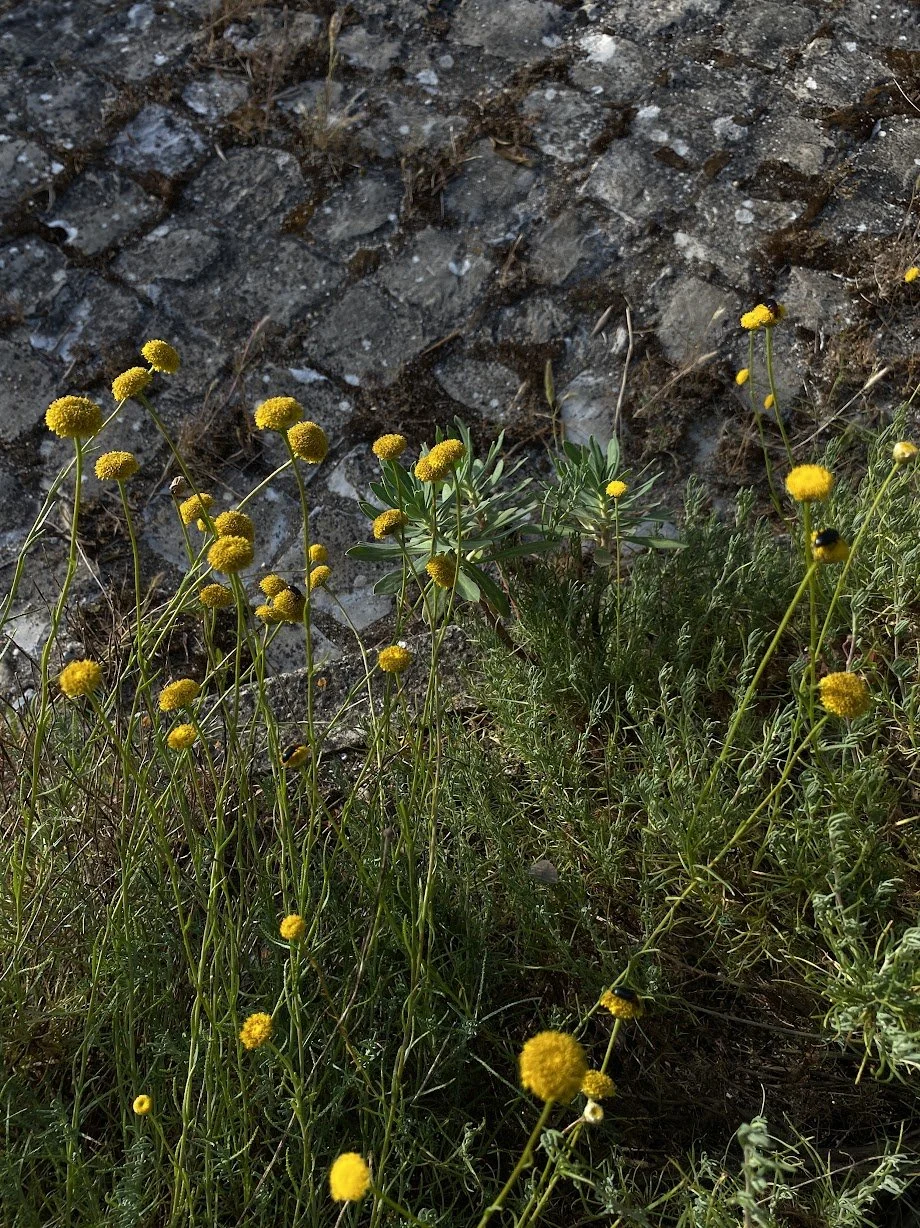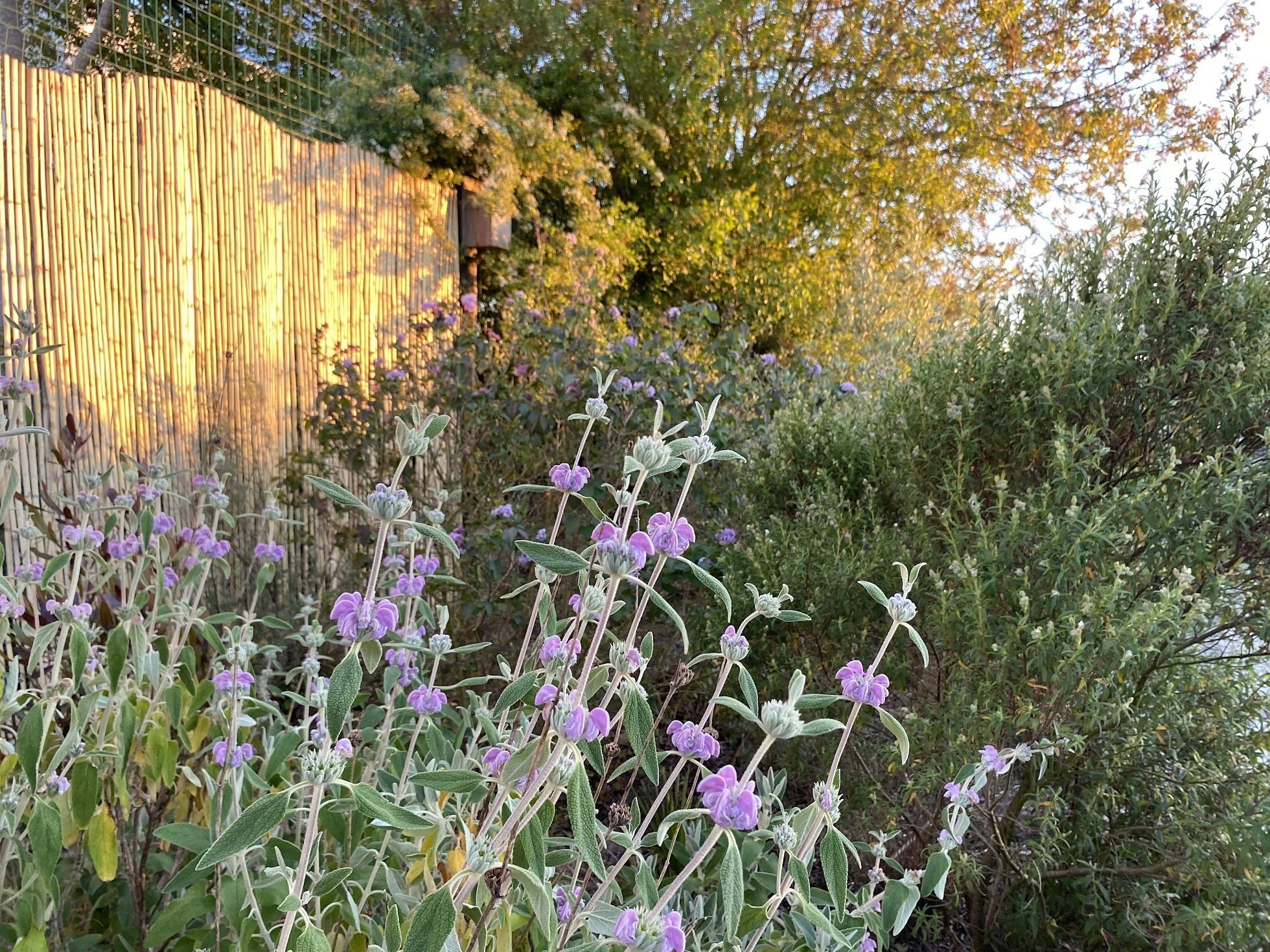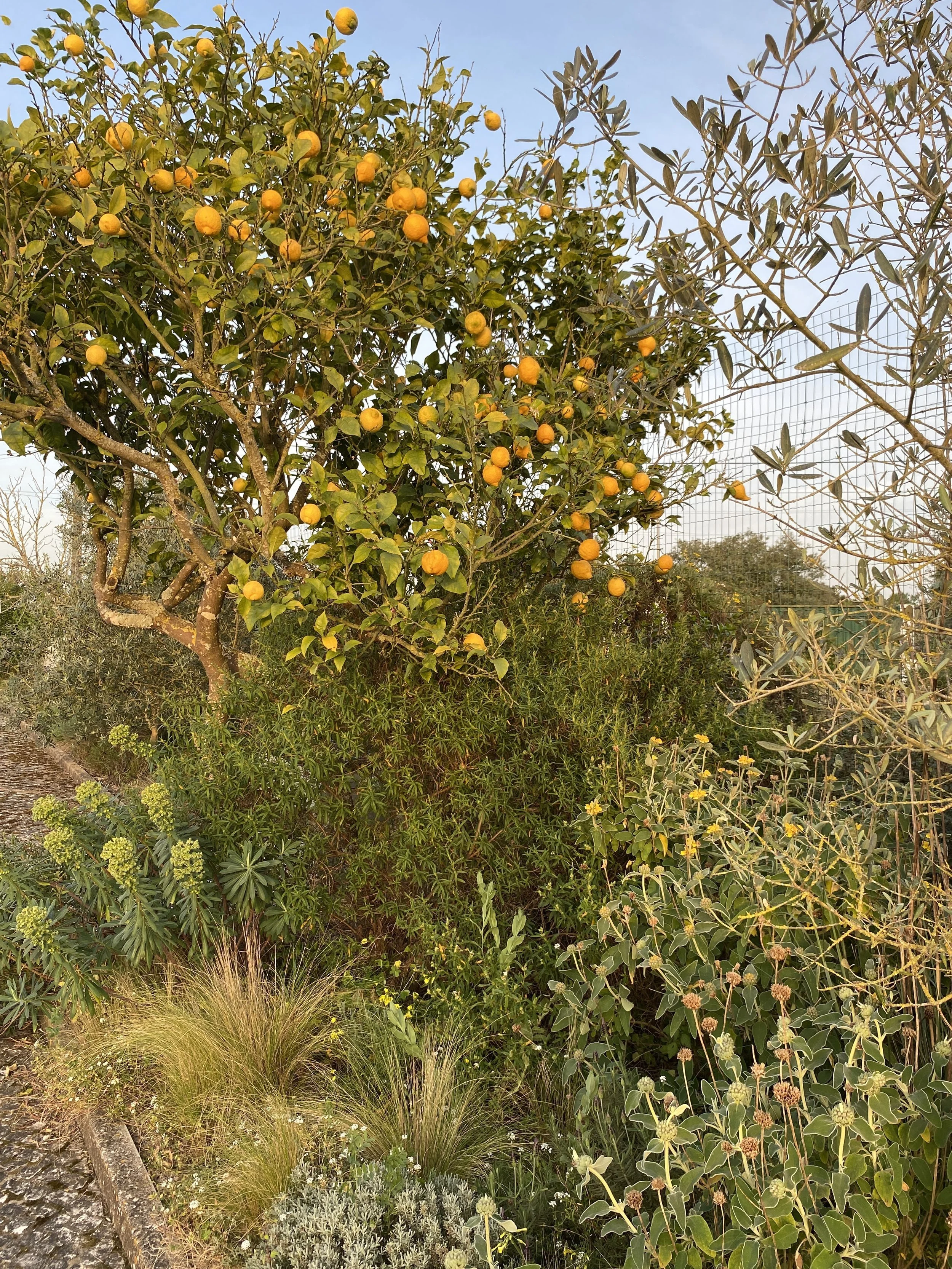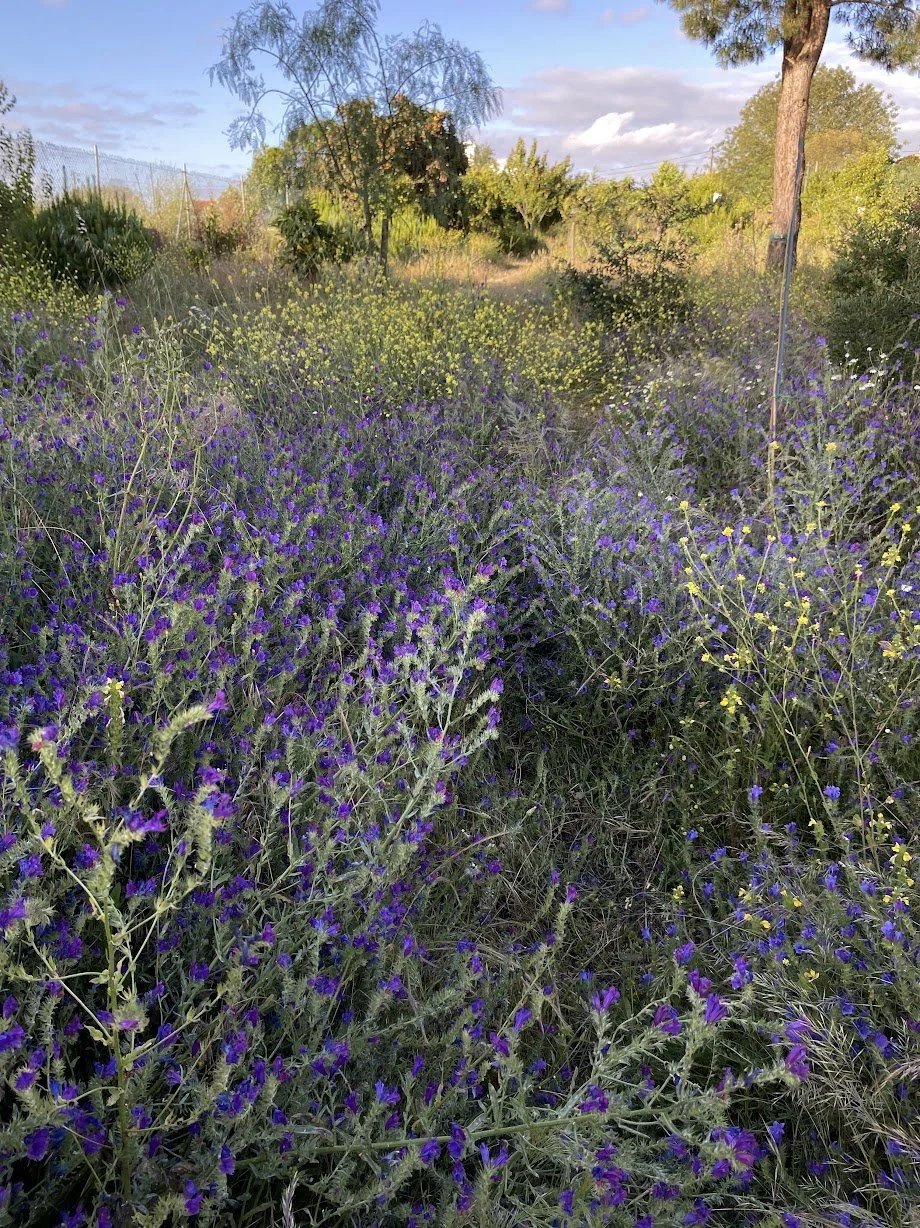Ribatejo country home, PT
Location: Cartaxo, Portugal
Scope: Planting design & soil restoration
Timeline: 2023 July - ongoing
A much-loved family home where all the plant choices and the soil management needed a rethink. The orchard’s compacted sandy soil had 0.01% organic matter with low water retention capacity. Working on creating a loop system, whereby one area of the landscape feeds another, more water is kept in the ground and harvested off of buildings for reuse. Soil is protected in various ways from the heavy summer heat and fed through composted systems.
This property is located 40km NE of Lisbon, in Ribatejo, one of the hottest regions of Portugal, where water is an ever-scarcer element. The region has a strong agricultural character dominated mostly by grapevines, olive and pine groves, extensive cereal systems and in the lowlands, small vegetable growers, leaving very little scattered areas of native forests. These areas are generally owned by the state and maintained by local shepherds that graze on the meadows.
DOS was approached to re-design the planting in a small countryside property where the existing borders had high water dependency with ill-suited plants and dominant species have started to take over the garden, such as Euryops chrysanthemoides, Osteospermum fruticosum, Pelargonium grandiflora, Agapanthus praecox and Tagetes sp. The main approach to this scheme was to create a palette of robust plants which will stand up to the drought whilst creating the atmosphere of a calm oasis.
Adjacent to the main house, the property has a swimming pool surrounded by borders and a terrace under a wooden pergola with lemon and orange trees, reminiscent of an orchard that was partially kept further down the land.
The land behind the orchard previously served as an intensively planted pine nut production, which were overgrowing the boundary and had to be removed. This area was given to nature with the intention of creating ideal habitats for nesting birds and foraging insects. Once the pines were gone, sunlight to reached the ground for the first time in 2 decades and a beautiful mix of native trees and shrubs started to grow.
Key design elements
Dry-tolerant beautiful planting borders for a calm atmosphere
Transition of land management with regenerative methods in order to increase organic matter in the existing topsoil layer which has been almost non-existent due to the constant use of chemical weed-killers and consequent direct exposure to the sun.
Manage careful irrigation of the orchard, planting borders and ornamental trees during first two years of establishment.
Core plants
Olea europaea | Euphorbia characias | Phlomis purpurea | Stipa tenuissima | Santolina chamaecyparissus | Lobularia maritima | Cistus monspeliensis I Lavandula stoechas | Santolina rosmarinifolia | Phlomis fruticosa | Santolina chamaecyparissus